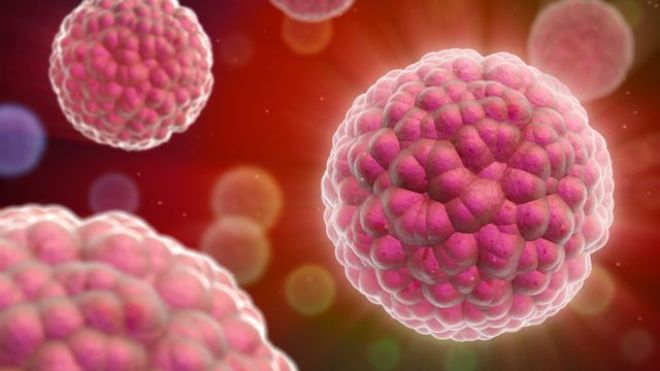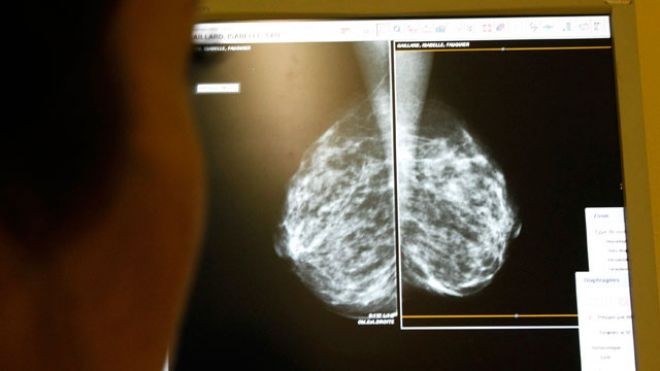
When Elena Skoko gave birth to her daughter three years ago, she felt pain. But she also felt something else: waves of pleasure so ecstatic they compared to an orgasm. “I had this wavy sensation of blissful waves going through me,” said Skoko, a singer and author of “Memoirs of a Singing Birth” (lulu.com, 2012). Though childbirth is frequently spoken of in terms of pain and punishment, some women do experience what are known as orgasmic or ecstatic births. A new survey, available online May 3 in the journal Sexologies, finds that midwives report witnessing orgasms in about 0.3 percent of births. Anatomically, orgasmic birth is no surprise, said Barry Komisaruk, a professor of psychology at Rutgers University in New Jersey who studies orgasm. In fact, the intense stimulation of the vaginal canal in childbirth may work to block pain whether that stimulation is felt as sexual or not. [Awkward Anatomy: 10 Odd Facts About the Female Body] Orgasmic birth: Yes, really Anecdotal reports of orgasm during birth have long circulated in the natural childbirth community. These reports reached perhaps their widest audience yet in 2009 with the documentary “Orgasmic Birth: The Best-Kept Secret,” directed by childbirth educator Debra Pascali-Bonaro. People are often skeptical of the concept of pleasure during birth, Pascali-Bonaro told LiveScience. Some see the idea of sexual feelings during childbirth as unacceptable, she said. “People see 'birth' and 'orgasmic' together on paper, and it pushes all their buttons on sexuality,” Pascali-Bonaro said. In addition, she said, many women in America give birth in settings where they aren't able to move around freely because of fetal monitoring devices, where they have little labor support and where they aren't allowed water to drink in case of a C-section (food and beverages aren't permitted before surgery). All of these limitations make a pleasurable birth experience less likely and less imaginable for women who've had babies, she said. The new study, conducted by psychologist Thierry Postel of Blainville-sur-Mer, France, is among the first to try to put hard numbers on how many women experience moments of ecstasy in birth. Postel contacted 956 French midwives, asking them to complete an online questionnaire about orgasmic birth. He got 109 complete responses for midwives, who, combined, had assisted 206,000 births in their careers. Postel focused on midwives rather than doctors or nurses, because midwives witness many births firsthand and are reliable observers, he wrote. He also asked midwives to forward the surveys to recent mothers if they saw fit. The results “established the fact that obstetrical pleasure exists,” Postel wrote. Midwives reported 668 cases in which mothers told midwives they'd felt orgasmic sensations in birth. In another 868 cases, midwives said they'd seen mothers demonstrate signs of pleasure during childbirth. Finally, nine mothers completed questionnaires confirming they'd experienced an orgasm during birth. If anything, Pascali-Bonaro said, the survey likely underestimates the number of women who've experienced pleasure in birth by asking primarily midwives rather than mothers about their experiences. In one screening of her film, Pascali-Bonaro said an obstetrician stood up to say he'd never witnessed anything remotely orgasmic in his years of delivering babies. “Three rows behind him a woman jumped up and said, 'Doctor, I gave birth with you three years ago, and I had a very orgasmic birth, with an orgasm, but what makes you think I would tell you?'” Pascali-Bonaro said. The anatomy of orgasmic birth Skeptics of orgasmic birth abound “I've also heard that men can enjoy a similar experience by having an intimate encounter with a 20-ton press,” a commenter appropriately named “Skeptic” posted on a 2008 New York Times article about Pascali-Bonaro's movie. But research suggests that orgasm during birth comes down to simple anatomy. “It's stimulation of the birth canal, stimulation of the cervix, the vagina and the clitoris and uterine contractions,” Komisaruk told LiveScience. “A lot of women say during sexual orgasms uterine contractions feel pleasurable.” Every woman's anatomy is different, Komisaruk said, so some women may experience pleasure during childbirth while others feel only the pain. [5 Surprising Facts About Pain] “There are so many factors that could make the difference between a pleasurable response and a terribly stressful, aversive experience that you can't generalize it,” he said. “There's no reason to try to generalize. Different people have different pain thresholds. Different people have different attitudes. If a woman has a fear of sexuality, if she starts having a pleasurable sensation she may feel this is completely inappropriate psychologically, and that itself could be an aversive effect.” In other words: No pressure. “Our message is not at all that this should be a performance standard,” Pascali-Bonaro said. Rather, she said, her goal is to see women given the full range of options for birth and the support they need to experience moments of joy and bliss during the process. The science of pain and pleasure Whether or not orgasmic birth is in the cards, the anatomy involved brings good news for laboring women. Komisaruk and his colleagues have found that sexual stimulation and orgasm reduce sensitivity to pain. (Sex can even cure migraines, according to a March 2013 study.) In 1988, Komisaruk and his co-researchers published a study in the Journal of Sex Research that found when women stimulated their vaginas or clitorises, they became less sensitive to painful stimulation but not to other tactile stimulation. In 1990, the researchers followed up with a study that found women in labor had reduced pain sensitivity during labor compared with before and after. (The women in the study used Lamaze breathing techniques rather than drugs to control pain.)[Blossoming Body: 8 Odd Changes That Occur During Pregnancy] In rats, Komisaruk has found that vaginal stimulation blocks the release of a pain transmitter called Substance P right at the level of the spinal cord. In other words, the sensory neurons tasked with transmitting their message of “ouch!” to the central nervous system are stymied from the get-go. “It's an actual physiological, very primordial system of the genital system blocking pain input,” Komisaruk said. In addition, two regions of the brain that become active during orgasm, the anterior cingulate cortex and the insula, are also active during painful experiences. “There's something very intriguing going on between pain and pleasure,” said Komisaruk. Komisaruk holds a patent on the substance that blocks the pain in rats, called vasoactive intestinal peptide. A few pharmaceutical companies have shown interest, he said, but none have yet been willing to shell out the money it would take to test the substance for use as a pain medication in humans. Out of the laboratory and in the delivery room, clitoral and nipple stimulation provide pain relief for some women during labor, Pascali-Bonaro said. Some even use vibrators during labor to decrease pain. “It's such a culture where some women actually feel shamed that they have pleasure, because the expectation is pain,” Pascali-Bonaro said. “We have to change that.” For Skoko, who sang in order to get through her contractions, accepting sensuality into the birthing room was key. “The moment I realized my body is behaving sensually spontaneously and not obstructing that feeling, and just going with this feeling of my sensual body, my labor just went fast ahead,” said Skoko, who gave birth at the Yayasan Bumi Sehat natural birth center in Bali, Indonesia, where she lives part-time. “I had pain, but was not afraid of it, because I was dealing with it,” Skoko said. “It was fun, because I could laugh through it.” Copyright 2013 LiveScience, a TechMediaNetwork company. All rights reserved. This material may not be published, broadcast, rewritten or redistributed.source : http://www.foxnews.com/health/2013/06/03/yes-orgasms-during-birth-are-real-study-suggests/







